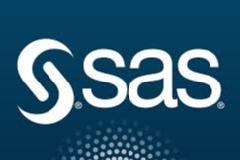SAS Base Programming for SAS 9 Exam
Accessing Data
Use FORMATTED and LIST input to read raw data files.
ï?· Distinguish between character and numeric data, between standard and nonstandard numeric data.
ï?· Use the INPUT statement with formatted input to read character, standard and nonstandard fixed-field data: INPUT variable informat;
ï?· Use the INPUT statement with list input to read character, standard and nonstandard free-format data: INPUT variable <$>;
Use INFILE statement options to control processing when reading raw data files.
ï?· Use the INFILE statement DLM= option to specify field delimiters.
ï?· Use the INFILE statement PAD= option to reading variable-length records.
ï?· Use the INFILE statement DSD= option to read data when missing values occur.
ï?· Use the INFILE statement options, FLOWOVER, MISSOVER, TRUNCOVER and STOPOVER, as appropriate to control reading records.
Use various components of an INPUT statement to process raw data files including column and line pointer controls, and trailing @ controls.
ï?· Use pointer controls.
ï?· Use line controls.
ï?· Use trailing @ and double trailing @.
Combine SAS data sets.
ï?· Concatenate and interleave data sets.
ï?· Merge data sets one-to-one.
ï?· Merge data sets one-to-many.
Access an Excel workbook.
ï?· Use the SAS/ACCESS EXCEL or PCFILES engine to read an .xlsx file OR use the SAS/ACCESS XLSX engine to read an .xlsx file.















